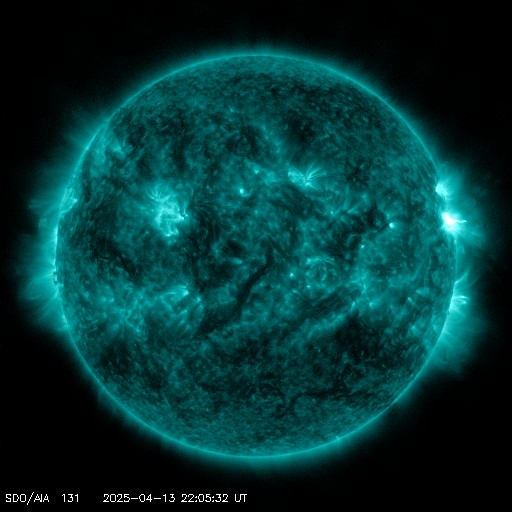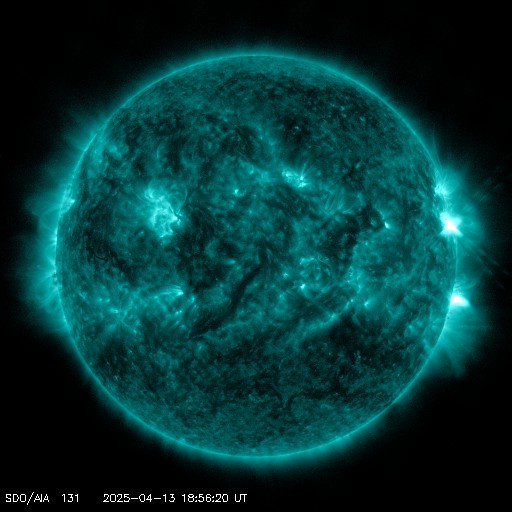Viewing archive of Monday, 11 July 2016
Daily bulletin on solar and geomagnetic activity from the SIDC
Issued: 2016 Jul 11 1230 UTC
SIDC Forecast
Solar flares
C-class flares expected, (probability >=50%)
Geomagnetism
Active conditions expected (A>=20 or K=4)
Solar protons
Quiet
| 10cm flux | Ap | |
|---|---|---|
| 11 Jul 2016 | 094 | 007 |
| 12 Jul 2016 | 093 | 008 |
| 13 Jul 2016 | 091 | 007 |
Bulletin
Over the past 24 hours solar activity has been low. No significant flares have been recorded. Active Region (AR) 2564 (Macintosh class:Dai; Mag. type:Beta-Gamma) has been quiet, but has shown some evidence of flux emergence in HMI magnetogram observations, this may increase flaring activity. No Earth directed Coronal Mass Ejections (CMEs) have been detected. Solar protons have remained at background levels over the past 24 hours. There is currently a large northern polar coronal hole extending to low latitudes located near central longitudes. This region will rotate into the Western hemisphere in the coming days. Solar activity is expected to remain low over the next 24 hours with a high probability of C-class flares and a low probability of M-class flares.
The solar wind speed has decreased from around 580 to 500 km/s over the past 24 hours. The total magnetic field strength has fluctuated around 5 nT. The Bz component fluctuated around 0 nT, ranging between -5 and +4 nT. Geomagnetic conditions ranged between Kp index 1-3 (NOAA) and local K index 1-3 (Dourbes) over the past 24 hours. The large northern polar coronal hole, will move into the Western hemisphere over the coming days and may increase solar wind speeds. However, over the next couple of days solar wind speeds are expected to decrease, with a small chance of a small high speed stream (HSS) hitting the Earth. Geomagnetic activity is expected to remain quiet, with the small chance of the HSS enhancing activity.
Today's estimated international sunspot number (ISN): 065, based on 24 stations.Solar indices for 10 Jul 2016
| Wolf number Catania | /// |
| 10cm solar flux | 094 |
| AK Chambon La Forêt | 017 |
| AK Wingst | 014 |
| Estimated Ap | 013 |
| Estimated international sunspot number | 050 - Based on 29 stations |
Noticeable events summary
| Day | Begin | Max | End | Loc | Strength | OP | 10cm | Catania/NOAA | Radio burst types | |
|---|---|---|---|---|---|---|---|---|---|---|
| None | ||||||||||
Provided by the Solar Influences Data analysis Center© - SIDC - Processed by SpaceWeatherLive
All times in UTC
Current data suggests there is a slight possibility for aurora to appear at the following high latitude regions in the near future
Gillam, MB, Yellowknife, NTLatest news
Latest forum messages
Support SpaceWeatherLive.com!
A lot of people come to SpaceWeatherLive to follow the Sun's activity or if there is aurora to be seen, but with more traffic comes higher server costs. Consider a donation if you enjoy SpaceWeatherLive so we can keep the website online!

Latest alerts
04:45 UTC - Geomagnetic activity
Active geomagnetic conditions (Kp4) Threshold Reached: 04:29 UTC
Sunday, 13 April 2025
22:21 UTC - Solar flare
Moderate M1.66 flare from sunspot region 4055
22:03 UTC - Radio Blackout
Minor R1 radio blackout in progress (≥M1 - current: M1.01)
20:48 UTC - Hemispheric Power Index
The OVATION model predicts the Hemispheric Power Index to reach 50GW at 21:39 UTC
19:09 UTC - Solar flare
Moderate M3.24 flare from sunspot region 4055
Space weather facts
| Last X-flare | 2025/03/28 | X1.1 |
| Last M-flare | 2025/04/13 | M1.6 |
| Last geomagnetic storm | 2025/04/06 | Kp5 (G1) |
| Spotless days | |
|---|---|
| Last spotless day | 2022/06/08 |
| Monthly mean Sunspot Number | |
|---|---|
| March 2025 | 134.2 -20.4 |
| April 2025 | 132.1 -2.1 |
| Last 30 days | 132.4 -10.7 |





